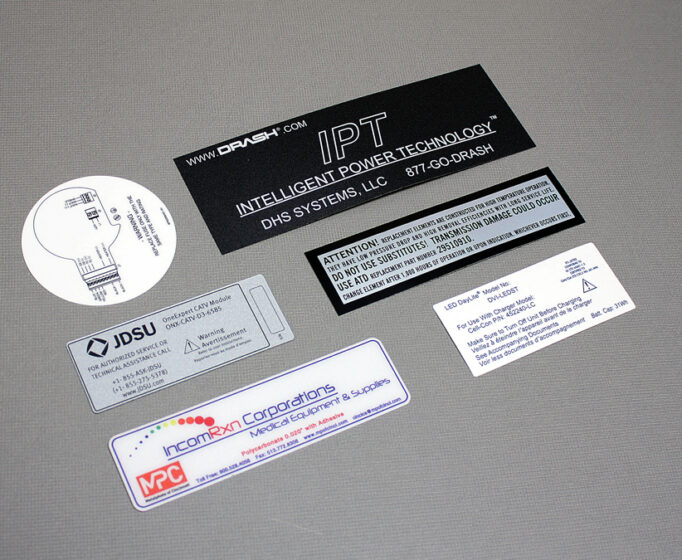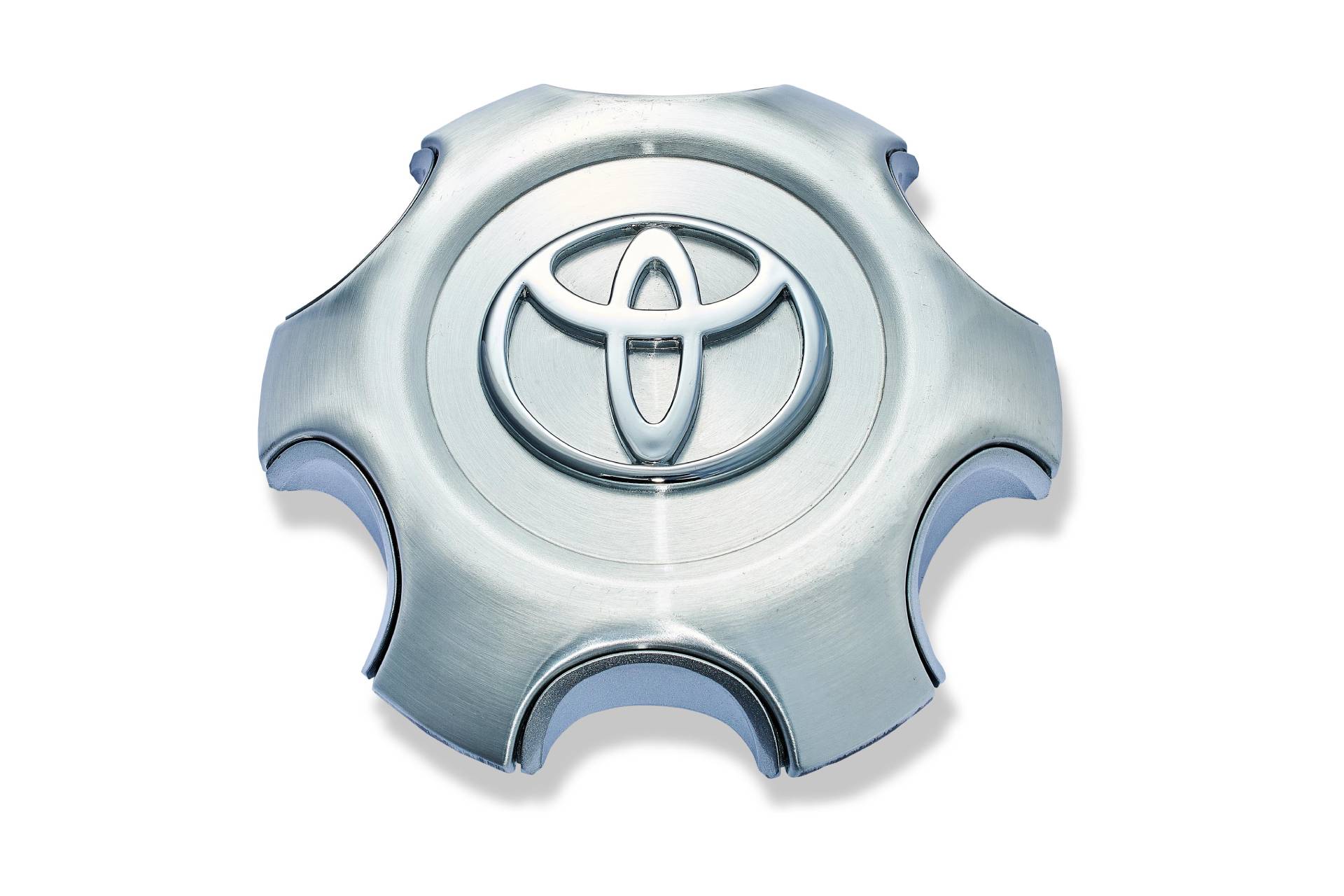Comprehending How Plastic Nameplates Work: Insights Into Their Performance and Benefits
Plastic nameplates are vital tools for recognition and communication in numerous settings. Built from resilient products like acrylic and PVC, they provide both strength and aesthetic appeal. Various printing methods boost their visibility and branding prospective. Recognizing their functionality exposes not just their functional applications yet additionally the advantages they offer companies. As industries progress, the role of plastic nameplates may move, prompting a more detailed check out their ongoing relevance and development.
The Materials Behind Plastic Nameplates
Plastic nameplates are crafted from a variety of products, each chosen for its one-of-a-kind homes and suitability for different applications. Typical products consist of acrylic, polycarbonate, and PVC, each offering distinctive advantages. Acrylic is favored for its clarity and lightweight nature, making it optimal for interior use and display functions. Polycarbonate, recognized for its high effect resistance, is frequently chosen for atmospheres where toughness is necessary (Plastic Nameplates). PVC, on the other hand, supplies a cost-effective solution with good weather resistance, appropriate for outside applications.Additionally, the option of product can affect variables such as color retention, simplicity of printing, and total visual appeal. This selection procedure guarantees that the last item fulfills details requirements, whether for branding, recognition, or attractive functions. Comprehending the buildings of these products helps in making informed choices when picking plastic nameplates for different demands
Production Processes of Plastic Nameplates
The production procedures of plastic nameplates include a number of important actions that ensure quality and resilience. Trick elements consist of material option methods, various printing techniques, and completing and finishing options. Comprehending these aspects is important for producing efficient and aesthetically pleasing nameplates.
Product Selection Techniques
Picking the right materials for producing plastic nameplates is vital for ensuring longevity, aesthetic appeal, and performance. Different plastic types are available, each offering one-of-a-kind properties suited for different applications. Polyvinyl chloride (PVC) is prominent for its price and resistance to ecological aspects, making it suitable for outdoor use. Acrylonitrile butadiene styrene (ABDOMINAL MUSCLE) provides improved impact resistance and is usually chosen for its remarkable toughness and flexibility. In addition, polycarbonate is favored for applications needing openness and high impact resistance. The selection process involves taking into consideration factors such as the planned use, ecological direct exposure, and wanted visual high qualities. Inevitably, cautious product selection considerably affects the efficiency and long life of plastic nameplates, providing to diverse industry requirements.
Printing Methods Summary
Product option lays the foundation for the succeeding printing approaches made use of in producing plastic nameplates. Numerous techniques, such as display printing, electronic printing, and pad printing, are used to accomplish sturdy coatings and premium layouts. Display printing is preferred for its capability to create dynamic shades and appropriates for huge runs. Digital printing, on the various other hand, uses versatility and precision, making it ideal for smaller orders with intricate layouts or variable information. Pad printing permits for the transfer of pictures onto unequal surfaces, accommodating intricate shapes. Each printing technique adds distinctly to the last product's look and durability, guaranteeing that the nameplates effectively convey the intended message and hold up against environmental elements.
Finishing and Finish Options
Ending up and finish choices play a vital function in enhancing the durability and visual appeal of plastic nameplates. Numerous methods, such as UV coating, give a protective layer that resists scrapes and fading, substantially prolonging the item's life expectancy. Furthermore, laminating flooring alternatives can supply a matte or glossy finish, permitting customization to match branding requirements. Electroplating and anodizing are also prominent techniques, including a metallic sheen while boosting corrosion resistance. These layers not only boost look but additionally add to the nameplate's performance by securing versus ecological elements. Additionally, specialized finishes, such as anti-graffiti coatings, assurance that nameplates keep their clarity and aesthetic allure in challenging conditions. Consequently, the ideal ending up and coating choices can substantially enhance the total worth of plastic nameplates.
Design Alternatives for Personalization
While checking out style choices for modification, one discovers a broad variety of possibilities that can improve the useful and aesthetic charm of plastic nameplates. Color choice is a main consideration, as vibrant colors can stand out while neutral tones advertise expertise. Various typeface choices and sizes additionally individualize nameplates, making sure readability and alignment with brand identity.Incorporating logos or images adds a distinct touch, enhancing organizational branding. Additionally, shape customization enables for one-of-a-kind styles, varying from conventional rectangles to much more elaborate kinds, satisfying particular themes or environments.Textures such as matte or shiny surfaces can also affect the general appearance, giving a tactile measurement. In addition, the integration of ornamental elements like boundaries or histories boosts visual rate of interest. These customization choices jointly enable companies to develop plastic nameplates that successfully interact their identity and message while fulfilling sensible demands.

Toughness and Long Life of Plastic Nameplates
Although lots of elements influence the sturdiness of plastic nameplates, the selection of material and manufacturing processes plays a significant duty in their durability. Premium plastics, such as polycarbonate and acrylic, are frequently picked for their fundamental resistance to effect, uv, and weather radiation. These materials can endure severe environmental conditions without substantial destruction, guaranteeing that nameplates stay undamaged over time.Furthermore, advanced production strategies, such as injection molding and laser engraving, add to the robustness of plastic nameplates. These procedures develop accurate and long lasting inscriptions that stand up to fading and wear. Additionally, protective coverings might be used to enhance resistance to scratches and chemicals, better extending their lifespan.Ultimately, the mix of quality materials and efficient production processes assures that plastic nameplates preserve their functionality and look for years, making them a trustworthy choice for various applications.
Applications Across Different Industries
Plastic nameplates check that serve a range of vital features throughout various markets. They are commonly made use of for industrial tools recognition, ensuring clear labeling for safety and operational efficiency. In addition, they offer reliable workplace signage remedies and play an important role in safety and security and conformity markings, highlighting their adaptability and relevance in varied environments.
Industrial Tools Recognition
Reliable commercial tools identification is essential throughout numerous markets, as it ensures safety, effectiveness, and compliance with regulative criteria. Plastic nameplates serve as a crucial tool in this procedure, giving clear and resilient identification for machinery and devices. Industries such as energy, manufacturing, and building use these nameplates to present essential information, including running instructions, risk warnings, and maintenance routines. Their resilience to harsh environments guarantees that important data continues to be obtainable, lowering the threat of accidents and operational downtime. Additionally, adjustable features enable branding and specific labeling needs, making plastic nameplates functional throughout applications. In general, reliable tools recognition with plastic nameplates fosters a safer workplace while boosting performance in varied commercial settings.
Office Signs Solutions

In numerous markets, the importance of clear communication extends beyond commercial equipment to office settings where signage plays a vital function. Plastic nameplates offer as effective workplace signs services, providing vital details such as employee names, task titles, and department designations. These nameplates enhance professionalism and trust and cultivate a welcoming atmosphere, helping both staff and visitors in navigating the work area. Additionally, they supply modification options, permitting businesses to align signs with branding and visual choices. In settings like medical facilities, schools, and company offices, clear and resilient signs warranties reliable interaction and adds to business efficiency. Inevitably, the use of plastic nameplates in workplace environments not just improves clearness yet likewise advertises a organized and natural office.
Safety And Security and Compliance Markings
While numerous companies focus on visual appeals and branding in their signage, compliance and safety and security markings are similarly crucial throughout different industries. These markings work as vital devices for communication, assuring that consumers and employees are aware of potential dangers, security protocols, and regulative requirements. In manufacturing, for example, plastic nameplates typically display cautioning tags and use instructions to reduce threats. In health care, conformity signage informs workers regarding hygiene methods and equipment usage, consequently promoting a safe atmosphere. In addition, the toughness of plastic nameplates makes them suitable for numerous settings, withstanding wear and tear from ecological aspects. In general, safety and compliance markings enhance operational performance, promote well-being, and assurance adherence to sector standards, making them crucial in modern-day offices.
Advantages of Using Plastic Nameplates
Numerous benefits make plastic nameplates an enticing selection for organizations and companies. One key advantage is their durability; plastic nameplates are resistant to fading, wetness, and various ecological elements, ensuring long life in varied settings. Furthermore, they are light-weight, making them very easy to mount and relocate as needed.Cost-effectiveness is another substantial advantage. Plastic nameplates generally need lower manufacturing prices compared to steel or timber options, permitting organizations to keep budget plans while achieving professional branding. Their versatility additionally sticks out, as they can be customized in numerous shapes, dimensions, and colors to match branding requirements.Furthermore, plastic nameplates can be conveniently printed with high-resolution layouts, promoting clear visibility and reliable interaction. They are commonly made from recyclable products, straightening with eco conscious practices. These combined benefits enhance the capability and allure of plastic nameplates for a series of applications in different sectors.

Tips for Picking the Right Nameplate for Your Needs
Choosing the appropriate nameplate can greatly improve a company's branding and interaction efforts. To make an educated decision, one need to first think about the material. Plastic nameplates use resilience and adaptability, making them suitable for numerous environments. Next off, examine the design facets, consisting of dimension, shade, and font design, guaranteeing they straighten with the organization's branding guidelines.Additionally, it is vital to examine the intended use the nameplate. If it requires to stand up to outside problems, choosing UV-resistant alternatives is suggested. Modification is another vital factor; customized nameplates can mirror uniqueness and professionalism.Lastly, spending plan factors to consider need to not be overlooked. Contrasting prices across various providers while factoring in quality will assist in discovering an appropriate remedy. By taking these aspects right into account, companies can select a nameplate that properly connects their identification and purpose.
Frequently Asked Concerns
Can Plastic Nameplates Be Recycled After Usage?
Plastic nameplates can be recycled, relying on the type of plastic used and neighborhood reusing facilities. Proper disposal and reusing techniques add to environmental sustainability, urging the reduction of plastic waste in land fills.
How Do I Tidy and Keep My Plastic Nameplate?

Are Plastic Nameplates Waterproof or Water-Resistant?
Plastic nameplates generally display water-resistant residential or commercial properties, safeguarding them from minor wetness exposure. Long term submersion or rough conditions might endanger their stability. Users must consider details materials and finishes for enhanced water-proof capabilities when picking nameplates
What Is the Typical Life-span of a Plastic Nameplate?
The ordinary life-span of a plastic nameplate typically varies from 5 to check this site out ten years, relying on aspects such as ecological exposure, material top quality, and upkeep. Normal treatment can prolong its use and look significantly.
Can I Order a Nameplate in a Particular Shape?
Customized form options for nameplates are frequently readily available through various manufacturers. Clients can ask for certain layouts, ensuring that the nameplate meets their aesthetic and useful needs while maintaining toughness and quality throughout its life expectancy. Material option lays the foundation for the succeeding printing techniques utilized in creating plastic nameplates. Numerous elements influence the durability of plastic nameplates, the option of material and manufacturing processes plays a considerable duty in their long life. These products can stand up to extreme ecological problems without significant destruction, ensuring that nameplates stay intact over time.Furthermore, advanced production methods, such as injection molding and laser engraving, contribute to the effectiveness of plastic nameplates. Plastic nameplates can be reused, depending on the type of plastic used and regional reusing centers. The ordinary lifespan of a plastic nameplate commonly varies from five to ten years, depending on factors such as ecological exposure, worldly quality, and upkeep.